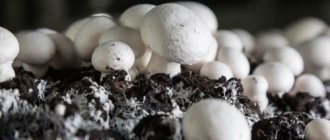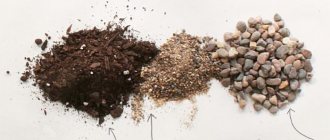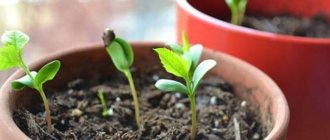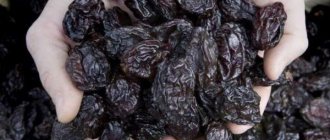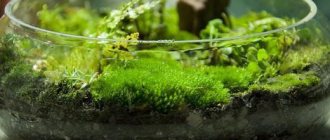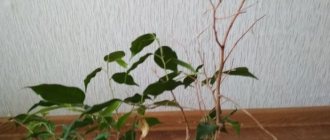If your summer cottage has very fertile soil, then you will probably be able to grow a good crop in the first year without using fertilizers. But any soil is gradually depleted. Therefore, it is imperative to periodically fertilize. In this way, provide plants with the nutrients necessary for their growth and full development. And often the very first fertilizing takes place at the stage of soaking the seeds in a nutrient solution. Experienced gardeners and gardeners competently combine mineral and organic fertilizers. And one of the most popular organic fertilizers can be confidently called liquid vermicompost.
What is liquid vermicompost?
First of all, the name vermicompost comes from a combination of Latin words. They can be translated as “life” and “earth”. But in fact, this is a product that can be obtained after processing manure with ordinary earthworms.
That is, by processing plant residues and passing them through the intestines, the worms produce a substance that has the ability to fix important compounds in the soil. And also prevent them from being washed out of the ground. This substance is called vermicompost. And no other beings are capable of producing it.
Features of the production of high-quality vermicompost in the country
To prepare vermicompost yourself, you will need special worms and organic waste. Algorithm of actions:
- Prepare a hole where the compost will be mixed. Instead of a pit, you can take a box made of plastic or wood with holes in the bottom.
- Fill the container with organic waste (silage, manure, leaves, humus, etc.).
- Add a little lime and peat (200 g per 1 kg of compost).
- Mix the ingredients and leave for five days. Every two days, water the mixture with warm water. The initial stage of fermentation is accompanied by heating the mixture to 40–50 °C. After five days the temperature will drop to 25 °C.
- Buy red Californian worms at a rate of 700–1000 pcs. per 1 cu. m organics. Release the worms into the container on the seventh day.
- Cover the mixture with a cloth to protect from sunlight. If a box is used, place a container underneath to collect liquid.
- For several weeks, the worms will actively reproduce, processing the compost.
- When the number of worms increases greatly, the top part of the compost should be removed, and the bottom should be sifted and dried. The bottom layer is the finished vermicompost.
- The top layer should be replenished every ten days with fresh organic matter so that the worms have food.
The process of making vermicompost takes up to four months. During this time, 1500 worms will produce two tons of vermicompost.
Description of vermicompost
Vermicompost in its usual form is similar to ordinary soil. This is compost that has been processed by earthworms. But after processing, vermicompost also includes other components. They make it so useful and indispensable for plant growth. By purchasing vermicompost in liquid form, you get an even more improved product. Because liquid forms of fertilizers are best absorbed by plants.
Forms of vermicompost
Modern industry produces biohumus in the form of a concentrated solution, in dry form and packaged in a bag.
Peculiarities:
- Liquid biohumus is preferably better than dry.
- The aqueous form is essentially an extract from its dry counterpart.
- When using the liquid form, you only need to prepare the solution in the required concentration according to the instructions and leave for about 24 hours.
- In addition to ease of use, the liquid form is also very economical - to prepare 10 liters of solution, for example for root feeding, only 50 ml of concentrate is required. This form of fertilizer is also called vermicompost tea.
The liquid formula reaches the plant roots better and faster. It is advisable to use liquid biohumus in the form of a 10% solution, but the concentration can be increased or decreased depending on the purpose of use.
Note!
The dry composition is practically indistinguishable from ordinary soil in appearance. There are no less useful elements than in liquid concentrate form.
It is better to use the dry form when digging the ground in spring - autumn or in all planting holes according to the norms according to the attached instructions.
Liquid vermicompost: what does it contain?
If we talk about the composition of vermicompost, then at least one fourth of it is humic acids. As well as their compounds with potassium and sodium. And fulvic acids. They just dissolve very well in water. At least 50% of the composition comes from various amino acids and microorganisms. As well as bacteria responsible for stimulating plant growth and nitrogen fixation.
In addition, vermicompost contains the main trio of elements necessary for the growth and proper development of any plant crop. We are, of course, talking about phosphorus, potassium and nitrogen. In the liquid version of the fertilizer, per liter of the substance there should be at least 3 grams of this trinity.
The fertilizer also contains the necessary content of other, no less useful elements. Namely: manganese, iron, magnesium and calcium. And also in slightly more moderate amounts of copper, zinc and boron. The fertilizer is rich in vitamins. But what you definitely won’t find there are weed seeds, larvae of harmful insects and pathogenic microorganisms. Because the absence of this disgrace is guaranteed by the fertilizer manufacturer.
All important elements are so well balanced that this particular fertilizer can be called one of the most effective and efficient.
Compound
The composition of high-quality organic fertilizer vermicompost includes:
- enzymes;
- plant hormones;
- humates;
- amino acids;
- natural antibiotics;
- macro- and microelements (nitrogen, boron and phosphorus, zinc, potassium and copper, as well as iron, sulfur and manganese);
- microorganism spores;
- humic acids.
Earthworms, digesting organic matter, saturate it with antibiotics, amino acids and enzymes. The resulting vermicompost increases plant protection from various diseases.
The advantages of using vermicompost are obvious. The germination process of seed material is accelerated, the root system is strengthened, and heavy metals are neutralized. Thanks to vermicompost, productivity increases, nitrate levels decrease, and soil structure improves.
Properties of matter
The most important property of vermicompost is that it significantly accelerates the growth and development of plants. This happens because fertilizer has a positive effect on photosynthesis. As well as metabolic processes. The result of using vermicompost will be active plant growth. More luxuriant flowering than usual. As well as a significant increase in productivity.
The liquid form of this substance is a concentrated extract. And it has another extremely important property. Thanks to its antimicrobial effect, vermicompost can significantly increase the immunity of planting material and seedlings.
Thanks to the use of this fertilizer at the stage of soaking the seeds, your plants will be able to more easily resist various diseases in the future. They will also be better protected from harmful insects. Such a high benefit of the product is determined precisely by the products obtained through the vital activity of worms.
How does liquid vermicompost affect plants?
Liquid vermicompost makes the soil more structured. It has an antimicrobial effect on it, while inhibiting the work of pathogens and harmful bacteria in the soil. It is a plant growth stimulator, helping to more actively absorb substances from the soil. Which, in the absence of vermicompost, are difficult to dissolve and are much worse absorbed.
It has a positive effect on plant immunity, increasing it. It also helps to resist serious diseases that in other circumstances could destroy a significant part of the plantings. For example, “ascochyta blight”, various forms of rot, powdery mildew.
Works great on plants in open ground. Helps them withstand weather changes. It is also very effective in greenhouse conditions and for indoor flowers. Significantly accelerates seed germination and rooting of seedlings and seedlings. Has a positive effect on the formation of buds. As well as the number of inflorescences and the duration of flowering.
What is it and its composition
Vermicompost or vermicompost is a processed organic base (manure, bird droppings, straw, weeds, autumn leaves, sawdust, food waste, etc.) with the help of special earthworms (red Californian). Microorganisms in the form of bacteria and fungi may also participate in the process.
Compared to manure, vermicompost is more effective and harmless, and it does not have an unpleasant or pungent odor. Manure may contain pathogenic microbes, weed seeds, and parasite eggs, from which vermicompost is completely free.
What kind of product vermicompost is from a chemical point of view will help to understand its composition. It includes:
- organic humic acids;
- humates (natural salts of humic acids);
- plant hormones;
- antibiotics;
- enzymes;
- amino acids;
- microorganism spores;
- macroelements - nitrogen, phosphorus, potassium, iron, sulfur;
- trace elements - boron, zinc, copper, manganese.
Earthworms, passing the soil through themselves, saturate it with enzymes, amino acids and antibiotics, which protect plants from diseases and strengthen their immunity.
The use of this fertilizer has many advantages:
- accelerates seed germination;
- strengthens and heals the root system;
- strengthens plant immunity;
- neutralizes the effects of nitrogen and heavy metals;
- reduces nitrate levels;
- increases productivity;
- improves soil structure, air and water permeability;
- increases the total vegetative mass.
Positive properties of the drug
It can accelerate the ripening of the crop by almost 10-14 days. At the same time, the taste of the fruit does not suffer at all. In the process of using vermicompost, plants absorb nutrients better. Consequently, the amount of various vitamins, vegetable sugar and protein increases in the fruits. At the same time, there is no questionable effect on the plant that occurs when using chemicals.
Controls the process of nitrate accumulation, which can begin due to an excess of nitrogen in the soil. It also blocks unwanted compounds and substances. It starts to work very quickly. It can be used at any time of the year. And also apply to any type of soil. But after flowering ends, when the fruits begin to set, it is better to refrain from fertilizing for a while.
Home production of vermicompost
Humanity leaves behind quite a lot of garbage and waste, a significant amount of which is organic matter. Organic matter, coupled with plant waste, can be used to produce compost, which is very well eaten by earthworms. And the worms process this entire compost heap into the most valuable fertilizer, which is what we are talking about.
To obtain biohumus of the quality that is necessary for particularly demanding farmers, you can build your own mini-installation on the site. It's not very difficult, the components and equipment are available to everyone.
Components you will need:
- crushed dried or rotten leaf mass of plants;
- bird droppings or rotted manure (preferably from cattle);
- food waste, including vegetable peelings;
- peat;
- rotted sawdust.
We need direct producers - red earthworms. California worms are, of course, preferable. But domestic red rainwater will also come in handy, although the process will slow down somewhat. Inventory you need are wooden boxes, a shovel and a sieve.
Place a mixture of the above ingredients into wooden boxes. Allow some time to obtain the required degree of maturity of the substrate. The mixture must be periodically stirred and watered; its temperature will rise to 50 degrees. At the end of the fermentation process, the temperature of the mixture will drop.
Then add earthworms. First, to check readiness, launch several dozen individuals. If everything suits them, send the rest into the boxes. The norm is about one thousand worms per 1 cubic meter.
Boxes with future fertilizer should be watered periodically and the mixture should be carefully loosened. It needs to be shaded, but not covered tightly. After the adaptation period, the worms will begin to reproduce, actively converting the mixture into the required fertilizer. Every decade the worms need to be fed with nutritious substrates.
After a few months, if there is a large increase in worms, you can try to separate the finished fertilizer. For this you will need a sieve through which you need to sift the finished mixture. Producer worms should not be fed for about 10 days, and then their food should be distributed on the surface of the mixture. Send the specimens collected on the surface to another container to receive the next portion of feeding. And pack the resulting fertilizer in plastic bags for storage.
How to use liquid vermicompost
Actually, how to apply is already clear - soak, water and spray. But, like any fertilizer, vermicompost must be handled correctly. Because even the most useful remedy can cause harm if the rules, regulations and dosage are not followed. The standard rate involves using a ten percent solution. But in reality, everything is very individual for each culture.
If you use vermicompost to fertilize lettuce, garlic or onions, as well as spinach and various types of greens, then you should water them with the solution once a week. Dilute 200 ml of the substance in 10 liters of water. When fertilizing vegetable crops, the concentration of the solution should be reduced. As a rule, 100-120 ml per ten-liter bucket of water. And to feed garden strawberries and other berry crops, it will be enough to dilute 60 ml of the substance in a ten-liter bucket of water.
Recommendations for use
All preparatory work begins on the plot in early spring. With the arrival of the thaw, gardeners think about what seedlings they will use. And also what fungicides will be used throughout the season. It is important to create an application calendar.
Thanks to it, you can safely use the necessary working mixtures for various purposes. But you must always remember about dosages.
Dosage calculation
Diluting liquid vermicompost for fertilizing is much easier than thinking about a plan for applying a dry type of fertilizer. The prepared working solution must meet the following parameters: ready-made concentrate in an amount of 500 ml per kilogram of planting material. The rates for applying vermicompost depend on the name of the crop and the form of fertilizer.
Liquid vermicompost for flowers
To feed the flowers in your garden, you need to dilute no more than 15 ml of vermicompost in a liter of water and fertilize twice a month. Grapes and domestic citrus trees can also be fed with the solution every couple of weeks. 250 ml of vermicompost per ten-liter bucket of water. Watering with a solution of vermicompost for indoor flowers is very effective. The result becomes noticeable quickly. And you need to water the plants with the solution once every one and a half to two months.
How to soak plants in the preparation?
We have already said that it is recommended to soak planting material, that is, seeds, in vermicompost. The solution is prepared by diluting 50 ml of fertilizer in a liter of water, but the time for which the seeds need to be soaked varies for all crops.
Tubers and bulbs can be dipped in a vermicompost solution for 15-20 minutes; seeds of grapes, pomegranates and citrus plants can be soaked for no more than an hour. Beans, peas, lentils and beans are soaked for 4-6 hours, no longer. Radish, lettuce, onion and garlic seeds (namely seeds, not sets or cloves) can be soaked for 12 hours. But the seeds of plants that germinate for a long time can be soaked for 24 hours, these are carrots, parsley and dill, ornamental plants and flowers.
Vermicompost is actively used to quickly adapt seedlings after transplanting into the ground. To do this, before planting, the hole prepared for the plant is watered with a low concentration solution of liquid vermicompost, this significantly speeds up the rooting process and increases the immunity of the seedlings. But do not forget that the roots of the seedlings are still weak, so for such watering, prepare a very weak solution. Also, a solution of liquid vermicompost can be used for foliar feeding, but then you need to prepare the composition according to a different recipe: 5 ml of the drug for each liter of water, the solution will be very weak, but for spraying this concentration is needed.
Rules for using liquid vermicompost solution
The beneficial properties of the fertilizer and its high safety have allowed gardeners to find the widest possible use for vermicompost, from root feeding to soaking seeds and seedling roots. And despite the fact that there are not only liquid but also dry natural preparations on the market, the first form of organic fertilizer continues to be the most popular.
For seedlings
Recently, the substance has become increasingly used for treating seedlings, not only as a nutrient mixture for soaking, but also for pouring holes dug specifically for planting young seedlings. Thus, the components contained in the additive promote the fastest possible rooting and adaptation, although some gardeners use weak concentrations of vermicompost for spraying sprouts.
In the latter case, the procedure is performed not only for general strengthening, but also to stimulate flowering, as well as to build up lush green mass.
The only “but” is that using pure concentrate can cause burns on the fragile root system, so it is strongly recommended to dilute vermicompost with clean water in a ratio of 1 to 20.
They also use dry matter, simply crushing the soil near the stems with it, and in this case there is no need to dilute anything, which is very convenient in its own way.
The components contained in the additive contribute to the fastest rooting and adaptation of plants
For seeds
So, to soak the seed, you should use an aqueous extract from humus (proportion 1 to 20), and not a ready-made solution, using up to 500 ml of diluted concentrate to treat a kilogram of planting material. As a result, the active components contained in vermicompost in excess will accelerate the appearance of the first sprouts and their emergence above the soil, due to which the harvest will be more abundant.
As for the duration of seed soaking, this indicator will directly depend on the type of crop being grown. The following auxiliary table will help you get acquainted with this data:
| Culture | Duration of soaking seeds in liquid vermicompost (concentration 1 to 20), h |
| All types of legumes | 6 |
| Radishes and lettuce leaves | 12 |
| Onions and potatoes (bulbs and tubers) | 0,5 |
| Melons and vegetables | 24 |
| Greenery | Up to 24 |
For adult garden and garden plants
Spraying the outer part of the plants is also carried out with a mixture diluted in a ratio of 1 to 200. In this case, the optimal time for applying external fertilizing by irrigating the green mass occurs during the period of active development and budding/fruit setting of the treated plants.
If you apply the product according to the classical scheme, which involves the root application of fertilizer, then in this case the type of crop being grown will be of decisive importance for calculating the dosage. The main ones are included in the table below, the study of which will help you prepare the optimal concentrate, as well as determine the frequency of its application:
| Culture | Dosage and frequency of applying vermicompost |
| Greenery | 200 ml/10 l every 7 days |
| Vegetables | 100 ml/10 l every 7 days |
| Berries | 60 ml/10 l every 7 days |
| Blooming | 10-15 ml/1 l every 14 days |
| Grapes and citrus | 250 ml/10 l every 14 days |
For indoor plants
Over time, plant growers got used to using vermicompost to fertilize indoor plants, widely using it for both decorative foliage and flowering crops. For these purposes, it is recommended to dilute 10 ml of the drug in a liter of clean, settled or filtered water, spilling the substrate with the resulting concentrate no more than once a month. If we talk about spraying, then in this case the dilution and use of liquid fertilizer is no different from the algorithm that is relevant for garden and vegetable crops.
In general, vermicompost is suitable for all plants without exception, being a natural component that enriches the soil and is practically not subject to chemical treatment.
It is just important not to forget that the product does not help in the fight against bacterial diseases and parasites, so you should not perceive it as a panacea for all problems.
Safety precautions
Liquid vermicompost is not a toxic substance, so you will not need safety glasses and masks when using it. If there are scratches or irritations on your hands, you can wear rubber gloves, and after the feeding process is completed, you must wash your hands. The fertilizer is sold in unbreakable plastic bottles.
If, by some chance, fertilizer gets into your eye, rinse with plenty of water; if you swallow a certain amount of the solution, then rinse your stomach with a weak solution of potassium permanganate or activated carbon. There have been no cases of poisoning with vermicompost and a reaction is possible only in case of individual intolerance.
Content of nutrients in vermicompost
Dry vermicompost is a fertilizer that is 10 times more effective than most known organic mixtures. It is completely safe and harmless to soils, so it can be used as an independent soil. Productivity on such soils increases by 30% or more. The value of the dry matter of vermicompost is as follows: humus - from 25 to 35%; phosphorus – up to 2%; nitrogen – up to 2%; magnesium – 0.5%; potassium – 1.2%; calcium – up to 3%; humic and fulvic acids. In addition, it is important to note that vermicompost does not contain toxic substances, mineral fertilizers and peat.
How to store liquid vermicompost
It is believed that liquid vermicompost retains its beneficial properties for 1.5 years from the date of manufacture. According to other data, the shelf life and storage are unlimited. In any case, you must comply with the storage conditions and do not leave the drug on the windowsill under the influence of direct sun; it is recommended to put it in a dark place and away from heat sources.
Sometimes, over time, sediment may appear in the bottle, don’t let this scare you, just shake the product a little and it’s ready for use again. Also, you should not make a hasty decision if you forgot the drug, for example, on the balcony and the composition is frozen - wait until it defrosts at room temperature and continue to use, as everything will be fine with it.
Believe me, liquid vermicompost is a universal, environmentally friendly fertilizer, which is produced in an extremely convenient form for use and brings great benefits to both indoor plants and garden crops.
Benefits of vermicompost
A compost heap for worms is the simplest solution in the country
When the question arises about choosing fertilizer, the first thing that comes to mind is manure. Most people involved in plant growing consider it environmentally friendly and profitable. This is partly true. But, as a rule, a number of negative qualities of manure are not taken into account. Usually people forget, and sometimes don’t even know, about an alternative option for soil fertilization - vermicompost (vermicompost). Let's do a little comparative analysis of humus and manure.
Comparison table between manure and humus
| Index | Manure | Vermicompost |
| Weed seeds | Yes | Rarely |
| Ecological cleanliness | No | Yes |
| Presence of pathogenic microflora | Yes | Rarely |
| Application rate per 1 hectare to obtain a good harvest | 600 – 900 kg. | 50 -90 kg. |
| Cost of fertilizer per hundred square meters | < 1500 rub. | < 1200 rub. |
| Ensuring strong plant immunity | No | Yes |
| Ability to bind heavy metals and radionuclides in soil | No | Yes |
| Ecological purity of products grown with this fertilizer | No | Yes |
| Smell | Yes | No |
| Harmless to soil | No | Yes |
| Soil component | No | Yes |
| Suitability for home floriculture | No | Yes |
| Suitability for growing lawns | No | Yes |
Organic Fertilizer Comparison Chart
| Defined indicator | manure | Chicken droppings | Compost | Vermicompost |
| Organic matter, % | 18-20 | 40-50 | 18-20 | 20-30 |
| Water, % | 70-80 | 50-55 | 60-70 | 40-75 |
| Weed seeds, pcs/kg | 1000-7000 | 100-1000 | There is | can be |
| Helminth eggs pcs/kg | 100-1000 | 100-1000 | There is | can be |
| Eggs and larvae of insects (flies, mole crickets) | There is | There is | There is | can be |
| Pathogens (salmonella) | There is | There is | There is | can be |
| Pesticides | can be | can be | can be | can be |
| Aftereffect, years | 3-4 | 2-3 | 3-4 | 3-4 |
I would also like to draw your attention to another very important point. Most people absolutely do not take into account that the presence of humus is the main indicator of the level of soil fertility. After all, we all know from school that the most fertile soil is chernozem, and its main component is humus. Accordingly, vermicompost is a fertilizer created by nature itself, specifically for disinfection, increasing soil fertility and improving the quality of crops.
But you need to choose vermicompost very carefully, since a lot of low-quality products have appeared on the market.



